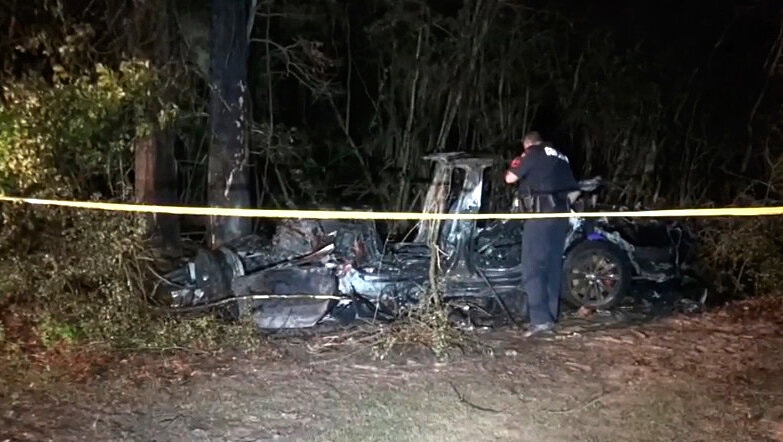U.S. safety officials investigating the reason behind the Tesla Model S crash that killed two men in Texas last month said on Monday that testing shows the vehicle’s automated steering system was “not available” on the road where the accident took place.
But the vehicle’s cruise-control function could still have been in operation, the National Transportation Safety Board (NTSB) said in its initial report.
The report does not provide any conclusions about the cause and circumstances of the fiery April 17 crash in a suburb of Houston. The NTSB and local police are investigating the crash. Local police have said they believed the crash took place with nobody in the driver’s seat, raising questions about Tesla’s driver-assistance systems.
NTSB said footage from the owner’s home security cameras revealed the owner entering the driver’s seat and the passenger entering the front passenger seat.
The NTSB report makes clear that Autopilot is in fact two systems. One is a “Traffic-Aware Cruise Control” that controls the automobile’s speed and distance from automobiles up ahead.
The second is “Autosteer” which controls lateral steering movements. Both must be engaged for Autopilot to be considered in operation.
NTSB said its tests of a similar vehicle at the crash site showed that Traffic-Aware Cruise Control could be engaged but that Autosteer was “not available on that part of the road”.
Autosteer assists within “clearly marked lanes” can be unavailable at times.
Tesla says on its website it prepares an upcoming Autosteer release for use on city streets.
The automaker says Traffic-Aware Cruise Control matches a car’s speed to that of surrounding traffic, while Autosteer helps in steering.
The concerning car crash in Spring, Texas, killed the 59-year-old owner, William Varner, an anesthesiologist, and the passenger, aged 69 as the Tesla car traveled 550 feet (167.64 m) before departing the road on a curve, driving over the curb, and striking a drainage culvert, a raised manhole, and a tree.
The NTSB said the car’s restraint control module, which is able to record data associated with vehicle speed, belt status, acceleration, and airbag deployment, was recovered but sustained fire damage.
Together with NTSB, the National Highway Traffic Safety Administration (NHTSA) is also investigating the crash. NHTSA, the federal agency responsible for vehicle safety, has started 28 investigations into crashes of Tesla vehicles, 24 of which remain active. At least four, including the fatal Texas accident, have taken place since March this year.


